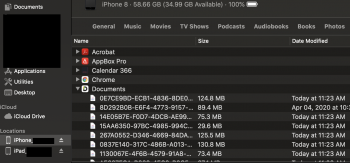I use Mac, Windows, iOS and Android and I wish to access the files stored on a phone from my computer. I do not use cloud services at all and I do not wish to.
With Windows and Android, I can plug my phone to my computer and fully access, read and write the files stored on my phone from my computer.
Can I do the same on my Mac? i.e., plug my iPhone (or Android) and fully access its files? Kind of like mounting the device as an external drive, basically. If not connection through USB, what about a home network router? (Without a cloud service being the middleman, of course)
Please, again, note I only refer to fully access, read and write all files stored on that phone. In real time (i.e., not having to move the file to the computer first to edit it and then move it back to the phone when I'm done)
Thank you in advance. : )
With Windows and Android, I can plug my phone to my computer and fully access, read and write the files stored on my phone from my computer.
Can I do the same on my Mac? i.e., plug my iPhone (or Android) and fully access its files? Kind of like mounting the device as an external drive, basically. If not connection through USB, what about a home network router? (Without a cloud service being the middleman, of course)
Please, again, note I only refer to fully access, read and write all files stored on that phone. In real time (i.e., not having to move the file to the computer first to edit it and then move it back to the phone when I'm done)
Thank you in advance. : )


